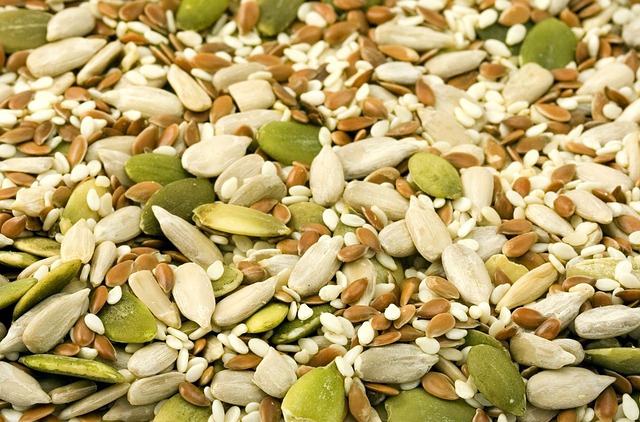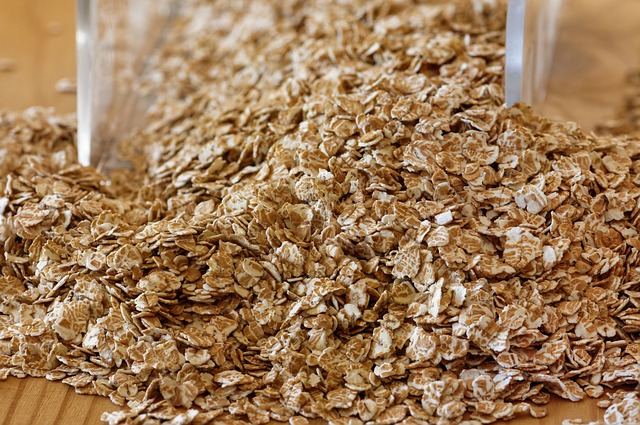Fiber Is the Nutrient Powerhouse for Optimal Wellness
In the pursuit of optimal health and well-being, one essential nutrient often goes unnoticed – fiber. This mighty plant-based compound is a true unsung hero, offering a myriad of benefits that can profoundly impact our bodies. From maintaining a healthy digestive system to supporting heart health and weight management, fiber is a versatile ally that deserves a prominent place in our diets.
Understanding the Different Types of Fiber
Fiber can be classified into two main categories: soluble and insoluble. Soluble fiber dissolves in water, forming a gel-like substance that aids in lowering cholesterol levels and regulating blood sugar. This type of fiber can be found abundantly in foods like oats, barley, nuts, seeds, beans, lentils, and certain fruits and vegetables.
On the other hand, insoluble fiber is the kind that doesn't dissolve in water. Its primary function is to promote regular bowel movements and prevent constipation by adding bulk to our stools. Whole grains, wheat bran, vegetables, and fruits with edible skins or seeds are excellent sources of insoluble fiber.

The Multifaceted Benefits of Fiber
1. Digestive Health
One of the most well-known benefits of fiber is its ability to support a healthy digestive system. Insoluble fiber acts as a natural laxative, helping to prevent constipation and other digestive issues like hemorrhoids, diverticulitis, and even colorectal cancer.
2. Heart Health
Soluble fiber has been shown to play a crucial role in maintaining a healthy heart. It binds to cholesterol in the digestive tract, preventing it from being absorbed into the bloodstream, and ultimately lowering cholesterol levels – a key factor in reducing the risk of heart disease.
3. Blood Sugar Control
For individuals with diabetes or those at risk of developing the condition, fiber can be a game-changer. Soluble fiber helps to slow down the absorption of sugars in the bloodstream, preventing sudden spikes in blood sugar levels and promoting better blood sugar control.
4. Weight Management
Fiber-rich foods are often more filling and satisfying, making it easier to avoid overeating and maintain a healthy weight. Additionally, the body burns more calories digesting high-fiber foods, which can further aid in weight management efforts.
5. Cancer Prevention
Numerous studies have suggested that a diet rich in fiber may help reduce the risk of certain types of cancer, such as colorectal and breast cancer. Fiber can bind to carcinogenic compounds in the digestive system and facilitate their removal from the body before they can cause harm.
Meeting Your Fiber Needs
According to the Dietary Guidelines for Americans, the recommended daily fiber intake for adults is 25 grams for women and 38 grams for men. However, most Americans fall short of these recommendations, consuming only about half of the recommended amount each day.

Increasing Your Fiber Intake with Ease
Incorporating more fiber into your diet doesn't have to be a daunting task. Here are some simple strategies to help you boost your fiber intake:
1. Embrace Fruits and Veggies
Fruits and vegetables, especially when consumed with their skins and seeds, are excellent sources of fiber. Aim for a colorful variety to get a range of different types of fiber.
2. Choose Whole Grains
Swap out refined grains for their whole-grain counterparts, such as whole-grain breads, cereals, pasta, and rice. Whole grains contain the entire grain kernel, including the fiber-rich bran and germ.
3. Snack on Nuts and Seeds
Nuts and seeds like almonds, walnuts, chia seeds, and flaxseeds are not only delicious but also packed with fiber, making them a perfect addition to your snack routine.
4. Incorporate Beans and Lentils
Beans and lentils are nutritional powerhouses, providing both fiber and plant-based protein. Try adding them to soups, stews, salads, or even as a side dish.
5. Read Nutrition Labels
When shopping for processed foods, make it a habit to read nutrition labels and choose products with a high fiber content – aim for at least 3 grams of fiber per serving.
Tips for Gradually Increasing Fiber Intake
While increasing your fiber intake is highly recommended, it's essential to do so gradually to avoid potential digestive discomfort, such as bloating, gas, and cramping. Here are some helpful tips:
1. Start Slow
If you're not used to consuming a lot of fiber, start by adding small amounts to your diet and gradually increase your intake over time, allowing your body to adjust.
2. Stay Hydrated
Fiber works best when combined with adequate hydration. Aim to drink at least eight glasses of water per day to help the fiber move smoothly through your digestive system.
3. Consider a Fiber Supplement
If you're struggling to meet your fiber needs through diet alone, you may consider adding a fiber supplement, such as psyllium husk or methylcellulose. Before beginning any new supplement, it's wise to seek advice from a healthcare professional.

Conclusion
Fiber is a true powerhouse nutrient that deserves a prominent place in our diets. From promoting regular bowel movements and supporting heart health to regulating blood sugar levels and aiding in weight management, the benefits of fiber are numerous and far-reaching. By embracing fiber-rich foods like fruits, vegetables, whole grains, nuts, seeds, beans, and lentils, you can unlock a world of better health and well-being. Start incorporating more fiber into your diet today and experience the transformative power of this incredible nutrient.
Frequently asked questions (FAQs): Role of Fiber in A Healthy Diet
1. What distinguishes soluble fiber from insoluble fiber?
The primary difference lies in their behavior when exposed to water. Soluble fiber dissolves and forms a gel-like substance, while insoluble fiber does not dissolve and instead adds bulk to the stool.
2. How much fiber should I aim to consume daily?
According to dietary guidelines, the recommended daily fiber intake is 25 grams for women and 38 grams for men.
3. Which foods are rich sources of soluble fiber?
Oats, barley, nuts, seeds, legumes (such as beans and lentils), and certain fruits and vegetables like oranges, apples, and carrots are excellent sources of soluble fiber.
4. How can fiber aid in weight management efforts?
Fiber-rich foods tend to be more satiating, helping to prevent overeating and promote a feeling of fullness. Additionally, the body expends more energy digesting high-fiber foods, which can contribute to weight management.
5. Can consuming too much fiber lead to digestive discomfort?
Yes, rapidly increasing your fiber intake or consuming excessive amounts of fiber can cause side effects like bloating, gas, and abdominal discomfort. It's advisable to gradually increase your fiber intake to allow your body to adjust.

6. Is it preferable to obtain fiber from whole foods or supplements?
Whenever possible, it's recommended to obtain fiber from whole food sources, such as fruits, vegetables, whole grains, nuts, and seeds. These foods provide additional nutrients and benefits beyond just fiber.
7. Can a high-fiber diet help reduce the risk of certain cancers?
Multiple studies have suggested that a diet rich in fiber may help lower the risk of developing certain types of cancer, including colorectal and breast cancer.
8. How does fiber contribute to heart health?
Soluble fiber can help support heart health by binding to cholesterol in the digestive tract, preventing its absorption into the bloodstream, and ultimately lowering cholesterol levels in the body.
9. Do children and teenagers have the same fiber recommendations as adults?
No, the recommended fiber intake for children and teenagers varies based on their age and gender, and is generally lower than the recommendations for adults.
10. Does cooking or processing affect the fiber content of foods?
While cooking methods like boiling or steaming typically do not significantly impact the fiber content of foods, processing and refining can remove a substantial amount of fiber, particularly from grains.
Powered by Froala Editor





Leave a Reply